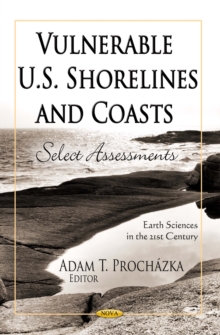
Archipelagos: Types, Characteristics and Conservation PDF
Edited by Mabel Perez
Part of the Earth Sciences in the 21st Century series
Description
Archipelagos: Types, Characteristics and Conservation begins by examining the Canary Islands and their characteristic orography and regime of winds that affect this archipelago.
Investigations were carried out by the authors which allowed for the characterization of the atmospheric corrosion for metals of wide industrial use.
Due to its geographical location, the Azores archipelago is one of the perfect places to observe and study the characteristics of atmospheric processes.
The remote conditions of the islands allow for the monitoring of greenhouse gases without the influence of local sources of pollution.
Consequences of climate change are also discussed. The closing chapter discusses a new paradigm in the sol-gel synthesis, particularly in the synthesis of bioactive glass.
In this new approach, the deionized water is replaced by highly ionized and naturally acidified thermal water collected from springs located in Furnas Volcano.
Given the potential impact of these waters on the structure and bioactivity of sol-gel bioactive glass, special emphasis is given to their genesis, physicochemical properties and ionic diversity.
Information
-
Download - Immediately Available
- Format:PDF
- Pages:123 pages
- Publisher:Nova Science Publishers, Inc.
- Publication Date:28/12/2018
- Category:
- ISBN:9781536146820
Information
-
Download - Immediately Available
- Format:PDF
- Pages:123 pages
- Publisher:Nova Science Publishers, Inc.
- Publication Date:28/12/2018
- Category:
- ISBN:9781536146820










